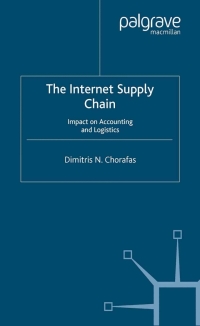Question
1.An merchant demands his bank to expand the forward agreement for US$ 89512.63 which is expected for development on 30th October, 2010, for a further
1.An merchant demands his bank to expand the forward agreement for US$ 89512.63 which
is expected for development on 30th October, 2010, for a further time of 9 months. He
consents to pay the necessary edge cash for such expansion of the agreement.
Contracted Rate - US$ 1= $ 99.5263
The US Dollar cited on 30-10-2010:- Spot - 99.545/89.517
3 months$ Premium - 12.87%/15.93%
Edge cash for purchasing and selling rate is 6.526% and 18.96% separately.
Figure:
I. The expense to the merchant in regard of the augmentation of the forward agreement, and
ii. The pace of new forward agreement.
2. The association's short-run peripheral expense bend is expanding when:
A) peripheral item is expanding
B) minimal item is diminishing
C) complete fixed expense is expanding
D) normal fixed expense is diminishing
3. A firm experiencing economies of scale over some scope of yield will have a:
A) rising since a long time ago run normal expense bend
B) falling since a long time ago run normal expense bend
C) consistent since a long time ago run normal expense bend
D) rising, at that point falling, at that point rising since a long time ago run normal expense bend
4. At the point when a firm copies its sources of info and finds that its yield has dramatically increased, this is known as:
A) economies of scale
B) steady re-visitations of scale
C) diseconomies of scale
D) an infringement of the theory of consistent losses
5. The bigger the measurement of a flammable gas pipeline, the below the normal all out cost of communicating 1,000 cubic feet of gas 1,000 miles. This is an illustration of:
A) economies of scale
B) standardizing economies
C) reducing minor returns
D) an expanding negligible result of work
6. On the off chance that all assets utilized in the creation of an item are expanded by 20% and yield increments by 20%, at that point there should be:
A) economies of scale
B) diseconomies of scale
C) consistent re-visitations of scale
D) expanding normal absolute expenses.
7. Economies and diseconomies of scale clarify why the:
A) short-run normal fixed expense bend decreases insofar as yield increments
B) minor expense bend should converge the base place of the association's normal all out cost bend
C) since quite a while ago run normal complete expense bend is ordinarily U-formed
D) short-run normal variable expense bend is U-formed
8. ______ shows the general yield created at a given degree of info:
A) Cost work
B) Production work
C) Iso cost
D) Marginal pace of specialized replacement
9. On the off chance that LAC bend falls as yield extends, this is expected to _____:
A) Law of reducing holds
B) Economics of scale
C) Law of variable extent
D) Diseconomies of scale
10. Isoquants are equivalent to:
A) Product Lines
B) Total utility lines
C) Cost lines
D) Revenue lines
Step by Step Solution
There are 3 Steps involved in it
Step: 1

Get Instant Access to Expert-Tailored Solutions
See step-by-step solutions with expert insights and AI powered tools for academic success
Step: 2

Step: 3

Ace Your Homework with AI
Get the answers you need in no time with our AI-driven, step-by-step assistance
Get Started


